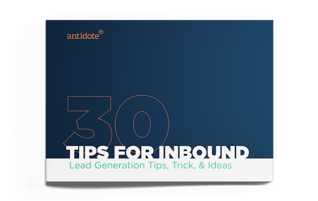Personalization has become the magic ingredient in marketing in our hyper-connected world that makes consumers feel seen and heard. With so much content coming at us from every direction, personalization helps brands cut through the noise and deliver messages that genuinely resonate. But here’s the catch: as we get better at tailoring these experiences, privacy concerns are also growing. How do we strike that perfect balance between using customer data for personalization and respecting their privacy? That’s the big question marketers are grappling with today.
Why Personalization Matters
Let’s be honest—no one likes feeling like another face in the crowd. Personalization goes way beyond simply slapping a customer’s first name at the top of an email. It’s about getting to know them—their likes, dislikes, habits and needs—and crafting experiences that feel custom-made just for them. And guess what? People love it! According to a study by Epsilon, 80% of consumers are more likely to hit that “buy” button when brands offer personalized experiences. Personalization can seriously boost engagement and drive sales, whether through spot-on product recommendations or ads that seem to speak directly to them.
The Privacy Puzzle
But here’s where things get tricky. To create those highly personalized experiences, brands need access to a lot of personal data. And while that data helps make marketing magic happen, it also opens the door to potential privacy concerns. Consumers are more aware than ever of how their data is being collected and used, and they’re understandably worried about where it might end up. High-profile data breaches and scandals haven’t helped, leading to a much more privacy-conscious public.
In fact, a Pew Research Center study found that 79% of Americans are concerned about how companies handle their data. This growing unease has led to tighter data protection regulations, like Europe’s GDPR and California’s CCPA. These laws give consumers more control over their personal info and put the onus on businesses to protect it.
Navigating Ethical Data Use
So, how do we walk the tightrope between personalization and privacy? It all comes down to ethical data usage. Here are some friendly tips to keep in mind:
- Be Transparent: Nobody likes secrets—especially when it comes to their personal data. Be clear and upfront about how you’re collecting, storing and using customer information. Make your privacy policies easy to find and understand so there are no surprises.
- Get Consent: Always ask for permission before collecting data. This isn’t just about following the rules; it’s about building trust. Give customers the tools to manage their privacy settings easily so they feel in control of their information.
- Collect Only What You Need: Don’t be greedy with data. Collect just enough to deliver a great personalized experience. Overloading on data can increase the risk of breaches and make customers feel uneasy. Focus on gathering insights that directly enhance their journey with your brand.
- Prioritize Security: Keep customer data safe with top-notch cybersecurity measures. Regularly review your security practices to ensure they’re current with the latest threats.
- Respect Boundaries: Even if you have consent, don’t overstep. Personalization should make customers feel valued, not overwhelmed. Find that sweet spot where your marketing feels like a helpful nudge rather than an intrusive push.
Building Trust in a Data-Driven World
Trust is everything in today’s digital landscape. When customers feel confident that their data is used responsibly, they’re more likely to engage with your brand and respond to personalized content. On the flip side, if that trust is broken, the fallout can be severe—lost customers, damaged reputation and even legal trouble.
That’s why ethical data practices should be at the heart of your personalization strategy. Not only does this help you comply with regulations, but it also fosters long-lasting relationships built on mutual respect and trust. And in the long run, this trust will be a major driver of your brand’s success.
Wrapping It Up
Personalization and privacy don’t have to be enemies. By finding the right balance, you can deliver meaningful, relevant experiences while keeping customer trust intact. As the digital world continues to evolve, the brands that thrive will be the ones that master both personalized marketing and responsible data management. So, let’s embrace ethical data practices today to create a safer, more personalized tomorrow!

DOWNLOAD OUR 30 TIPS TO INBOUND MARKETING GUIDE!
|
Discover the top 30 proven inbound marketing Strategies to attract and convert qualified leads. Download our free guide now and learn:
|







